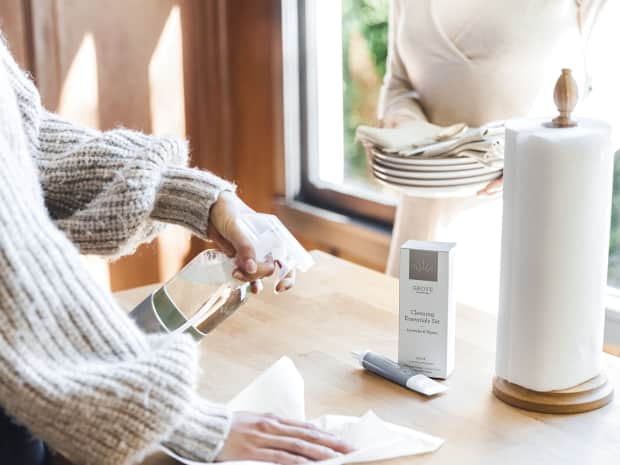1. Wet the sponge
You can't put a dry sponge in the microwave without consequences. Before you nuke it, soak it in a half cup of water.


Last Updated: July 27, 2022
Love your sponge but hate that sour smell? Learn how to disinfect a sponge in the microwave in as little as two minutes, and say goodbye to harmful bacteria.
There are few items as essential to our cleaning routine as a sponge, but is the thing we are using to clean really clean itself? All that absorbent material that helps you soak up grime also acts as spacious real estate for a host of different bacteria. If your sponge has developed that sour stink, don't chuck it in the trash can just yet. Extend the life of your sponge by learning how to disinfect a sponge in the microwave.
As your used sponge sits out on the counter or in the bottom of the sink, tons of tiny bacteria are multiplying within the pores of the material, resulting in a less than pleasant smell. Not only does it stink to high heck, but it can even be dangerous, since sponges can carry harmful E.coli and other bacteria. But instead of throwing your stinky sponge in the top rack of your dishwasher, which eliminates only a minimal amount of bacteria, try disinfecting it in the microwave.
Absolutely! That is, as long as the sponge design doesn't contain any metal. In as little as two minutes, you can kill or inactivate as much as 99% of all bacteria residing in your sponge. Zap it for two more minutes, and you can say goodbye to 100% of bacteria and get your sponge ready for its next tough job.
Even when you microwave them regularly, sponges are meant to be thrown away and replaced regularly. Keep your sponge for two to three weeks tops. Have a stockpile of extra sponges on hand so you can get rid of the old one as soon as it’s outworn its welcome.
GROVE TIP
Never let your sponge come in contact with uncooked meat. Raw meat contains fecal bacteria, which you'll spread around the kitchen with every swipe.
You can't put a dry sponge in the microwave without consequences. Before you nuke it, soak it in a half cup of water.
Place your wet sponge in the microwave, and zap it on high for two minutes. If you're worried about any residual bacteria, repeat steps one and two.

The microwaved sponge is going to be very hot. Let it cool off before you reach in and grab it. Wring it out, and use it worry-free.
That really depends on how often you use the sponge. If it’s a kitchen sponge used to clean dishes on a regular basis, give it a pass through the microwave every other day. If it’s a sponge you sporadically use to clean other areas of the home, give it a quick zap after each use.
Cleaning a sponge in the microwave is the most effective way to give the boot to harmful bacteria, but it isn't the only option. You can also put your sponges on the top rack of your dishwasher, although this method doesn’t kill all of the bacteria. More effective is soaking sponges for five minutes in a gallon of water with ¾ cups of bleach — however, this isn’t the safest or most eco-friendly option.
That pungent odor you notice on your sponge is a direct result of the bacteria multiplying within it. The bacteria eats and secretes fat, and that fat is what makes your sponges stinky — and effective disinfecting necessary.
A kitchen sponge is one of the biggest sources of germs and bacteria in the home. Cleaning up from a single meal with a dirty sponge can spread harmful bacteria across kitchen surfaces, resulting in the spread of foodborne illnesses.
Looking for more cleaning how-tos and other sustainable swaps you can make at home? Grove has you covered. From timely topics such as our handwashing and hand sanitizer breakdown to evergreen primers like our simple ways to reduce your plastic use at home, our handy guides are here to answer your most pressing questions. And let us know how if you have any cleaning questions (or share your own tips using #grovehome) by following Grove Collaborative on Instagram, Facebook, Twitter, and Pinterest.
If you're ready to take on germs, shop Grove Collaborative's cleaning essentials for the cleaning tools to tackle the job.

The most overlooked things in your home you should be cleaning right now.

Our handy guide to everything you need to know to keep you and your family healthy and germ-free.

How to properly wear a face mask, clean a cloth face covering, transition to sustainable, eco-friendly mask options.

How to clean and disinfect your home to prevent and reduce the spread of germs and bacteria.